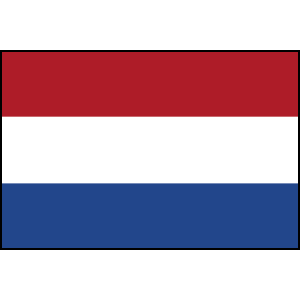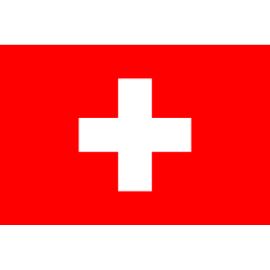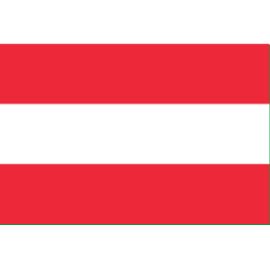Ads
related to: NetherlandsBook Your Hotel in Netherlands. Browse Reviews & Photos. Check Out Our Price Guarantee. Choose Hotels With Free Cancellation So If Your Plans Change, We Can Refund Your Money.
Prepare for Takeoff on the Cheapest Flights Around! We Compare 100s of Sites to Find the Best Flight Fares on the Planet!
Best Flight Deals? Exclusive Fares on 2024 Spring Break and Winter Flights. Book Now. Cheapest Flight Deals? Last Minute Price Drops on Intl. & Domestic Airfare. Compare Today!
Compare Flights to Netherlands With Opodo©. Save on Your Next Flight Today! Book The Cheapest Flight Tickets To Netherlands & Save $ On Your Flight!
Search results
- Playoff Round 1Jun 18, Finished
 Netherlands2-3Grolsch Veste Stadium
Netherlands2-3Grolsch Veste Stadium Italy
ItalyOther matches
Euro 2016 Qualifiers FT Nov 18 vs 
Republic of Ireland W1 - 0Euro 2016 Qualifiers FT Nov 21 @ 
Gibraltar W6 - 0European Championship Finals 9:00 am GMT-04:00 Jun 16 @ 
Poland European Championship Finals 3:00 pm GMT-04:00 Jun 21 vs 
France The Netherlands, informally Holland, is a country located in northwestern Europe with overseas territories in the Caribbean. It is the largest of the four constituent countries of the Kingdom of the Netherlands.
- Overview
- Relief
- Drainage and dikes
- Soils
- Climate
- Plant and animal life
Netherlands, country located in northwestern Europe, also known as Holland. “Netherlands” means low-lying country; the name Holland (from Houtland, or “Wooded Land”) was originally given to one of the medieval cores of what later became the modern state and is still used for 2 of its 12 provinces (Noord-Holland and Zuid-Holland). A parliamentary democracy under a constitutional monarch, the kingdom includes its former colonies in the Lesser Antilles: Aruba, Bonaire, Curaçao, Saba, Sint Eustatius, and Sint Maarten. The capital is Amsterdam and the seat of government The Hague.
The country is indeed low-lying and remarkably flat, with large expanses of lakes, rivers, and canals. Some 2,500 square miles (6,500 square km) of the Netherlands consist of reclaimed land, the result of a process of careful water management dating back to medieval times. Along the coasts, land was reclaimed from the sea, and, in the interior, lakes and marshes were drained, especially alongside the many rivers. All this new land was turned into polders, usually surrounded by dikes. Initially, man power and horsepower were used to drain the land, but they were later replaced by windmills, such as the mill network at Kinderdijk-Elshout, now a UNESCO World Heritage site. The largest water-control schemes were carried out in the second half of the 19th century and in the 20th century, when steam pumps and, later, electric or diesel pumps came into use.
Despite government-encouraged emigration after World War II, which prompted some 500,000 persons to leave the country, the Netherlands is today one of the world’s most densely populated countries. Although the population as a whole is “graying” rapidly, with a high percentage over age 65, Amsterdam has remained one of the liveliest centres of international youth culture. There, perhaps more than anywhere else in the country, the Dutch tradition of social tolerance is readily encountered. Prostitution, “soft-drug” (marijuana and hashish) use, and euthanasia are all legal but carefully regulated in the Netherlands, which was also the first country to legalize same-sex marriage.
This relative independence of outlook was evident as early as the 16th and 17th centuries, when the Dutch rejected monarchical controls and took a relatively enlightened view of other cultures, especially when they brought wealth and capital to the country’s trading centres. In that period Dutch merchant ships sailed the world and helped lay the foundations of a great trading country characterized by a vigorous spirit of enterprise. In later centuries, the Netherlands continued to have one of the most advanced economies in the world, despite the country’s modest size. The Dutch economy is open and generally internationalist in outlook. With Belgium and Luxembourg, the Netherlands is a member of the Benelux economic union, which in the 1950s and 1960s served as a model for the larger European Economic Community (EEC; now embedded in the European Union [EU]), of which the Benelux countries are members. The Netherlands is also a member of the North Atlantic Treaty Organization (NATO) and the Organisation for Economic Co-operation and Development (OECD), and it plays host to a number of international organizations, especially in the legal sector, such as the International Court of Justice.
Britannica Quiz
You Name It!
The Netherlands is bounded by the North Sea to the north and west, Germany to the east, and Belgium to the south. If the Netherlands were to lose the protection of its dunes and dikes, the most densely populated part of the country would be inundated (largely by the sea but also in part by the rivers). This highly developed part of the Netherlands, which generally does not lie higher than about three feet (one metre) above sea level, covers more than half the total area of the country. About half of this area (more than one-fourth of the total area of the country) actually lies below sea level.
Are you a student? Get Britannica Premium for only 24.95 - a 67% discount!
Learn More
The lower area consists mainly of polders, where the landscape not only lies at a very low elevation but is also very flat in appearance. On such land, building is possible only on “rafts,” or after concrete piles, sometimes as long as 65 feet (20 metres), have been driven into the silt layer.
The Zuiderzee was originally an estuary of the Rhine River. By natural action it then became a shallow inland sea, biting deep into the land, and eventually it was hollowed into an almost circular shape by the action of winds and tides. In 1920 work was begun on the Zuiderzee project, of which the IJsselmeer Dam (Afsluitdijk), begun in 1927, was a part. This 19-mile- (30-km-) long dam was completed in 1932 to finally seal off the Zuiderzee from the Waddenzee and the North Sea. In the IJsselmeer, or IJssel Lake, formed from the southern part of the Zuiderzee, four large polders, the IJsselmeer Polders, with a total area of about 650 square miles (1,700 square km), were constructed around a freshwater basin fed by the IJssel and other rivers and linked with the sea by sluices and locks in the barrier dam.
The first two polders created there—Wieringermeer and North East (Noordoost) Polder, drained before and during World War II—are used mostly for agriculture. The two polders reclaimed in the 1950s and ’60s—South Flevoland Polder (Zuidelijk) and East Flevoland Polder (Oostelijk)—are used for residential, industrial, and recreational purposes. Among the cities that have developed there are Lelystad and Almere.
In the southwest, the disastrous gales and spring tide of February 1, 1953, which flooded some 400,000 acres (162,000 hectares) of land and killed 1,800 people, accelerated the implementation of the Delta Project, which aimed to close off most of the sea inlets of the southwestern delta. These delta works were designed to shorten the coastline by 450 miles (725 km), combat the salination of the soil, and allow the development of the area through roads that were constructed over 10 dams and 2 bridges built between 1960 and 1987. The largest of these dams, crossing the five-mile- (eight-km-) wide Eastern Schelde (Oosterschelde) estuary, has been built in the form of a storm-surge barrier incorporating dozens of openings that can be closed in the event of flood. The barrier is normally open, allowing salt water to enter the estuary and about three-fourths of the tidal movement to be maintained, limiting damage to the natural environment in the Eastern Schelde. In the interest of the commerce of the ports of Rotterdam and Antwerp, no dams were constructed in the New Waterway, which links Rotterdam to the North Sea, or the West Schelde, an approach to Antwerp, Belgium. The dikes along these waterways consequently had to be strengthened.
A region with a very specific character has been formed by the great rivers—Rhine, Lek, Waal, and Maas (Meuse)—that flow from east to west through the central part of the country. The landscape in this area is characterized by high dikes along wide rivers, orchards along the levees formed by the rivers, and numerous large bridges over which pass the roads and railways that connect the central Netherlands with the southern provinces.
In the late Pleistocene Epoch (from about 126,000 to 11,700 years ago), the Scandinavian ice sheet covered the northern half of the Netherlands. After this period, a large area in the north of what is now the Netherlands was left covered by moraine (glacial accumulation of earth and rock debris). In the centre and south, the Rhine and Maas rivers u...
The climate of the Netherlands is temperate, with gentle winters, cool summers, and rainfall in every season. Southerly and westerly winds predominate, and the sea moderates the climate through onshore winds and the effect of the Gulf Stream.
The position of the country—between the area of high-pressure air masses centred on the Azores and the low-pressure region centred on Iceland—makes the Netherlands an area of collision between warm and polar air masses, thus creating unsettled weather. Winds meet with little resistance over the flat country, though the hills in the south significantly diminish the velocity of the potent wind that prevails along the coast. On average, frost occurs 60 days per year. July temperatures average about 63 °F (17 °C), and those of January average 35 °F (2 °C). Annual rainfall averages about 31 inches (790 mm), with only about 25 clear days per year. The average rainfall is highest in summer (August) and autumn and lowest in springtime. The country is known—not least through the magnificent landscapes of Dutch painters—for its heavy clouds, and on an average day three-fifths of the sky is clouded.
Most wild Dutch plant species are of the Atlantic district within the Euro-Siberian phytogeographic region. Gradients of salt and winter temperature variations cause relatively minor zonal differences in both wild and garden plants from the coast to more continental regions. The effects of elevation are negligible. Vegetation from coastal sand dunes, muddy coastal areas, slightly brackish lakes, and river deltas is especially scarce in the surrounding countries. Lakes, marshes, peatland, woods, heaths, and agricultural areas determine the general floral species. Clay, peat, and sand are important soil factors for the inland vegetation regions.
Animal life is relegated by region according to vegetation. Seabirds and other sea life, such as mollusks, are found especially in the muddy Waddenzee area and in the extreme southwest. Migrating birds pass in huge numbers through the Netherlands or remain for a summer or winter stay. Species of waterbirds and marsh and pasture birds are numerous. Larger mammals, such as roe deer, red deer, foxes, and badgers, are mostly restricted to nature reserves. Some species, such as boars, beavers, fallow deer, mouflons, and muskrats, have been introduced locally or reintroduced. Some reptiles and amphibians are endangered. Numerous species of river fish and river lobsters have become scarce because of water pollution. There is a diversity of brackish and freshwater animals inhabiting the many lakes, canals, and drainage ditches, but the vulnerable species of the nutritionally deficient waters have become rare.
The Kingdom of the Netherlands (Dutch: Koninkrijk der Nederlanden, pronounced [ˈkoːnɪŋkrɛik dɛr ˈneːdərlɑndə(n)] ⓘ), commonly known simply as the Netherlands, is a sovereign state consisting of a collection of constituent territories united under the monarch of the Netherlands, who functions as head of state.
Netherlands, country located in northwestern Europe, also known as Holland. The country is low-lying and remarkably flat, with large expanses of lakes, rivers, and canals. Some 2,500 miles of the Netherlands consist of reclaimed land, the result of a process of careful water management dating back to medieval times.
- Amsterdam
- Prime Minister: Mark Rutte
- 1 USD equals 0.932 euro
- (2024 est.) 18,031,000
People also ask
How many people live in the Netherlands?
Is the Netherlands a member of the European Union?
Is Holland a country?
How many provinces are in the Netherlands?
A comprehensive overview of the geography, people, society, government, economy, energy, communications, transportation, military, and transnational issues of the Netherlands. Learn about the history, culture, and statistics of this Western European country and its Caribbean territories.
The Netherlands, informally Holland, is a country located in northwestern Europe with overseas territories in the Caribbean. It is the largest of the four constituent countries of the Kingdom of the Netherlands.

















































